
Dame Agatha Mary Clarissa Christie, Lady Mallowan, was an English writer known for her sixty-six detective novels and fourteen short story collections, particularly those revolving around fictional detectives Hercule Poirot and Miss Marple. She also wrote the world's longest-running play, The Mousetrap, which was performed in the West End from 1952 to 2020, as well as six novels under the pseudonym Mary Westmacott. In 1971, she was made a Dame (DBE) for her contributions to literature. Guinness World Records lists Christie as the best-selling fiction writer of all time, her novels having sold more than two billion copies.

Hercule Poirot is a fictional Belgian detective created by British writer Agatha Christie. Poirot is one of Christie's most famous and long-running characters, appearing in 33 novels, 2 plays, and more than 50 short stories published between 1920 and 1975.

Cards on the Table is a work of detective fiction by the English author Agatha Christie, first published in the UK by the Collins Crime Club on 2 November 1936 and in the US by Dodd, Mead and Company the following year. The UK edition retailed at seven shillings and sixpence (7/6) and the US edition at $2.00.

The Mysterious Affair at Styles is a detective novel by British writer Agatha Christie. It was written in the middle of the First World War, in 1916, and first published by John Lane in the United States in October 1920 and in the United Kingdom by The Bodley Head on 21 January 1921.
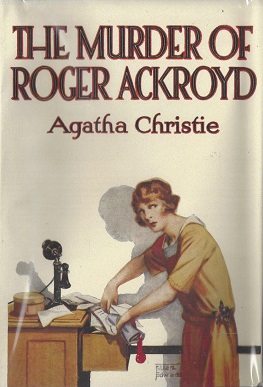
The Murder of Roger Ackroyd is a work of detective fiction by British writer Agatha Christie, first published in June 1926 in the United Kingdom by William Collins, Sons and in the United States by Dodd, Mead and Company. It is the third novel to feature Hercule Poirot as the lead detective.

Captain Arthur J. M. Hastings, OBE, is a fictional character created by Agatha Christie as the companion-chronicler and best friend of the Belgian detective, Hercule Poirot. He is first introduced in Christie's 1920 novel The Mysterious Affair at Styles and appears as a character in eight other Poirot novels and plays, in addition to being the narrator of several others.
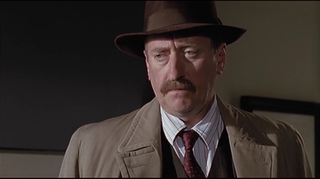
Inspector James Japp is a fictional character who appears in several of Agatha Christie's novels featuring Hercule Poirot.

Peril at End House is a work of detective fiction by British writer Agatha Christie, first published in the US by the Dodd, Mead and Company in February 1932 and in the UK by the Collins Crime Club in March of the same year. The US edition retailed at $2.00 and the UK edition at seven shillings and sixpence (7/6).

The Secret of Chimneys is a work of detective fiction by British writer Agatha Christie, first published in the UK by The Bodley Head in June 1925 and in the US by Dodd, Mead and Company later in the same year. It introduces the characters of Superintendent Battle and Lady Eileen "Bundle" Brent. The UK edition retailed at seven shillings and sixpence (7/6) and the US edition at $2.00.

The Mysterious Mr Quin is a short story collection by British writer Agatha Christie, first published in the UK by William Collins & Sons on 14 April 1930 and in the US by Dodd, Mead and Company later in the same year. The UK edition retailed at seven shillings and sixpence (7/6) and the US edition at $2.00.

Three Act Tragedy is a work of detective fiction by British writer Agatha Christie, first published in the United States by Dodd, Mead and Company in 1934 under the title Murder in Three Acts and in the UK by the Collins Crime Club in January 1935 under Christie's original title. The US edition retailed at $2.00 and the UK edition at seven shillings and sixpence (7/6).
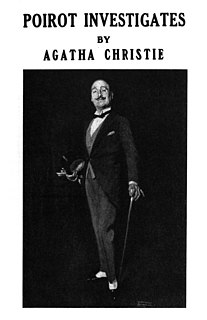
Poirot Investigates is a short story collection written by English author Agatha Christie and first published in the UK by The Bodley Head in March 1924. In the eleven stories, famed eccentric detective Hercule Poirot solves a variety of mysteries involving greed, jealousy, and revenge. The American version of this book, published by Dodd, Mead and Company in 1925, featured a further three stories. The UK first edition featured an illustration of Poirot on the dust jacket by W. Smithson Broadhead, reprinted from the 21 March 1923 issue of The Sketch magazine.
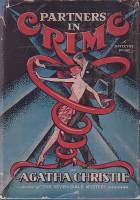
Partners in Crime is a short story collection by British writer Agatha Christie, first published by Dodd, Mead and Company in the US in 1929 and in the UK by William Collins, Sons on 16 September of the same year. The US edition retailed at $2.00 and the UK edition at seven shillings and sixpence (7/6). All of the stories in the collection had previously been published in magazines and feature her detectives Tommy and Tuppence Beresford, first introduced in The Secret Adversary (1922).
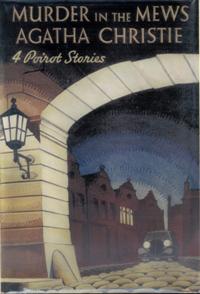
Murder in the Mews and Other Stories is a short story collection by British writer Agatha Christie, first published in the UK by Collins Crime Club on 15 March 1937. In the US, the book was published by Dodd, Mead and Company under the title Dead Man's Mirror in June 1937 with one story missing ; the 1987 Berkeley Books edition of the same title has all four stories. All of the tales feature Hercule Poirot. The UK edition retailed at seven shillings and sixpence (7/6) and the first US edition at $2.00.

Problem at Pollensa Bay and Other Stories is a short story collection by Agatha Christie published in the UK only in November 1991 by HarperCollins. It was not published in the US but all the stories contained within it had previously been published in American volumes. It retailed at £13.99. It contains two stories with Hercule Poirot, two with Parker Pyne, two with Harley Quin and two gothic tales.
Black Coffee is a play by the British crime-fiction author Agatha Christie (1890–1976) which was produced initially in 1930. The first piece that Christie wrote for the stage, it launched a successful second career for her as a playwright.
The gentleman detective, less commonly lady detective, is a type of fictional character. He has long been a staple of crime fiction, particularly in detective novels and short stories set in Britain in the Golden Age. The heroes of these adventures are typically both gentlemen by conduct and also members of the British gentry. The literary heroes being in opposition to professional police force detectives from the working classes.
The Passing of Mr. Quin is a 1928 British mystery film which was co-directed by Leslie S. Hiscott and Julius Hagen, starring Clifford Heatherley, Mary Brough and Ursula Jeans. The film was based on the short story The Coming of Mr. Quin, part of the collection The Mysterious Mr. Quin, which was written by Agatha Christie. It was the first British film to be made of one of Christie's works. The short story was adapted by Hiscott, who would in 1931 direct Alibi, the first film to feature Christie's more well known Belgian detective Hercule Poirot. The film was made at Twickenham Studios in London.

Agatha Christie (1890–1976) was an English crime novelist, short-story writer and playwright. Her reputation rests on 66 detective novels and 14 short-story collections that have sold over two billion copies, an amount surpassed only by the Bible and the works of William Shakespeare. Her works contain several regular characters with whom the public became familiar, including Hercule Poirot, Miss Marple, Tommy and Tuppence Beresford, Parker Pyne and Harley Quin. Christie wrote more Poirot stories than any of the others, even though she thought the character to be "rather insufferable". Following the publication of the 1975 novel Curtain, Poirot's obituary appeared on the front page of The New York Times.
Her novels under the pen name Mary Westmacott and her nonfiction books are not covered in this article.














